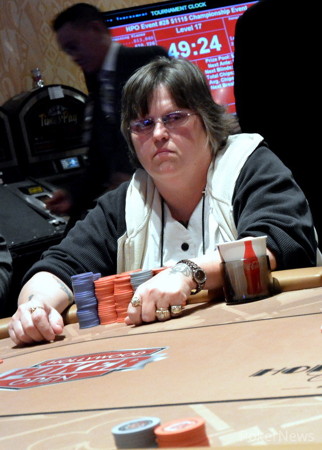Poker Heads Up Blinds Rules
Aggression is Critical in Heads-Up Poker! Aggression is an important part of any form of poker but with heads-up it's critical. You're in the blinds every hand. If you buy-in for $200 for a $1/$2 heads-up match and fold every hand, you will lose half your stack in just 66 hands. According to heads up poker rules, the dealer posts the small blind and the other player posts the big blind. The first card is dealt to the player in the Big Blind. The dealer acts first pre-flop and the big blind acts first on the flop, turn, and river. The dealer always goes last on the flop, turn, and river.
In heads-up online poker, you have a small and a big blind, which switches person each new hand. If you are the small blind, you are first to act pre-flop. Normally you either open or fold. You open a big % of your hands and some really bad hands you fold. If the small blind raises, the big blind has to make a decision. You can either fold, call or re-raise. If you call, we usually name it ‘defending’, because you are defending your big blind that you already paid. The question is, what hands should you defend and what not.
First of all, I’d like to say that every situation is different, so there is no rule of thumb. This is because every villain plays either more aggressive or more passive than the other. But there are some things you can keep in mind when you have no information on the villain. For example, you can act differently on how many big blinds your villain opens on the small blind. This usually ranges from 2 – 3 big blinds. This is easy mathematics; if your villain opens 2 big blinds, you only have to chip in 1 big blind more. This means you can defend a wider range of hands. Then again, if your villain opens 3 big blinds, you should tighten up that range, because it’s more expensive to see a flop. Sometimes your villain opens 2.5 times the big blind. Then you should find a way in between those two ranges.
Here are some examples:

- From now on I will call the small blind, SB, and the big blind, BB
- For each example imagine we’re playing a 0.25/0.50$ heads-up game. The SB posts $0.25 and the BB posts $0.50. The pot is $0.75
Scenario 1 (2x BB);
Before the tournament begins, the players will agree to a blinds structure, usually set by the tournament organizer. Casino Charlevoix Quebec 7stud Favorite Poker Game:Unlimited Hold Them, PLO or Reverse Hold Em Posted 02 April 2008 - 08:32 AM ajs510, on heads up poker small blind big blind Wednesday, April 2nd, 2008, 7:11 AM, said:shulda gone with the fat albert gambling chek approachhishga.
SB raises to $1.
SB is risking $0.75, to win $0.75.
BB should defend at least $0.75/$1.50$ so should defend 50% of his range.
Scenario 2 (2.5x BB);
SB raises to $1.25 (2,5xBB).
SB risks $1 to win $0.75.
BB should defend at least $0.75/$1.75 so should defend ~43% of his range.
Scenario 3 (3x BB);
SB raises to $1.5 (3xBB)
Poker Big Blinds
SB risks $1.5 to win $0.75.
BB should defend at least $0.75/$2 so should defend 37.5% of his range.

This is some easy mathematics you should keep in mind as big blind pre-flop. You should also keep in mind whether your villain raises a lot of small blinds, or not so many. When your villain raises almost 100% of his small blinds. You can start thinking about widening your range a bit. Because he gets dealt bad hands as well, which he is also opening. But also keep in mind that if your villain raises a small percentage of his small blinds, that you should tighten up a big, because he will often have better cards when you don’t tighten up.
So all in all, defending is not as complicated as it sounds. The things you have to keep in mind are:
Big Blind Rule
- How aggressive or passive is my villain pre-flop on the small blind?
- Is he opening a lot of small blinds, or is he not?
- How many big blinds is he opening to?